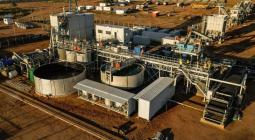Weatherwatch: how ‘sun queen’ Mária Telkes pioneered solar power
Hungarian-American physicist patented many pieces of technology that harness the sun’s rays to create clean energy
During the second world war, American airmen and sailors shot down or torpedoed in the Pacific often became stranded on life rafts and died of dehydration before they could be rescued.
The biophysicist Mária Telkes was drafted in from the Massachusetts Institute of Technology to find a way of preventing dehydration and thus saving servicemen’s lives.
The Hungarian-American scientist did so by inventing an emergency balloon-like desalination device that used the sun’s heat to evaporate seawater and condense it into clean drinking water.
After the war, she developed more ideas on solar thermal heat and in 1948 pioneered the world’s first entirely solar-heated home: Dover Sun House in Massachusetts.
The house used imposing 10ft (3-metre) high windows to collect the sun’s rays and melt a salt (sodium sulphate), which stored the solar heat.
As the salt cooled and resolidified, the heat was released and used for heating air circulating throughout the two-bedroom home for approximately 10 days or more of cold weather.
Among other inventions, in 1953, she also developed an easy-to-use solar oven for cooking food in remote areas, capable of reaching 200C.
Telkes (1900-1995) became known as the “sun queen” and registered more than 20 patents, mostly based on solar power, over her working life.
Cover photo: Innovations such as the photovoltaic solar panel are in part a legacy of Telkes’s work. Photograph: Carly Earl/The Guardian





